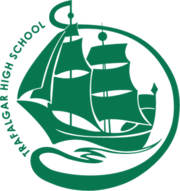
Education in Australia encompasses the sectors of early childhood education (preschool) and primary education, followed by secondary education, and finally tertiary education, which includes higher education and vocational education. Regulation and funding of education is primarily the responsibility of the States and territories; however, the Australian Government also plays a funding role.
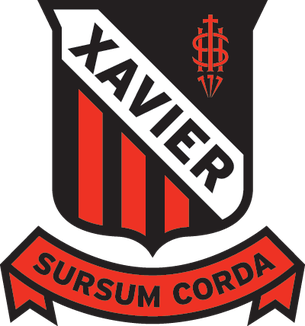
Xavier College is a Roman Catholic, day and boarding school predominantly for boys, founded in 1872 by the Society of Jesus, with its main campus located in Kew, an eastern suburb of Melbourne, Victoria, Australia. Classes started in 1878.

The Mac.Robertson Girls' High School is a government-funded single-sex academically selective secondary day school, located in South Melbourne, Victoria, Australia. Entry for Mac.Rob, which is operated by the Victorian Department of Education, is by competitive academic examination. It is unique in its status as a statewide provider for girls in Year Nine to Year Twelve. The equivalent for boys is its brother school, Melbourne High School. Each year, over 3,000 candidates sit the entrance examination for a total of approximately 960 places.

The University High School is a government-funded co-educational secondary day school, located in the Melbourne suburb of Parkville, Victoria, Australia. As of 2022, 1,708 students attended the school. In 2023, it was ranked 67th in Victoria by percentage of VCE study scores of 40 or above.

Glen Waverley Secondary College is a non-selective public government school located in Glen Waverley, Victoria, Australia. It is one of the largest secondary schools in Victoria, with 1,979 students and 158 teachers as of 2017. In addition, the college is one of the highest performing state high schools in Victoria, it ranked 59 out of all 530 Victorian high-schools in 2013, based on the Australian Tertiary Admission Rank (ATAR).

Pakenham Secondary College is situated approximately 50 kilometres southeast of Melbourne, Australia. Established in 1968 to provide education to a largely rural community, the school now enrols over 920 students from an urban community.
Clonard College is an independent Roman Catholic secondary day school for girls, located in Herne Hill, a suburb of Geelong, in Victoria, Australia. Founded and owned by the Brigidine Sisters in 1956, Clonard College follows the traditions of the Brigidine order and Kildare Ministries. Luci Quinn is the College Principal.
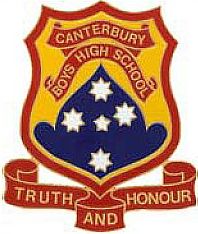
Canterbury Boys' High School (CBHS) is a public secondary day school for boys located in Canterbury, a south-western suburb of Sydney, New South Wales, Australia. It is located near the Canterbury Park Racecourse and about 200 metres north of Canterbury Girls' High School.
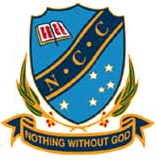
Noosa Christian College is a co-educational Primary and Secondary College, located in Cooroy, near Noosa, Queensland, Australia. The college is owned and operated by the Seventh-day Adventist Church and its sister college, Northpine Christian College, is located in Dakabin, Queensland, approximately 1 hour south of Cooroy. It is a part of the Seventh-day Adventist education system, the world's second largest Christian school system.
The Canobolas Rural Technology High School, also known as Canobolas High School, is a government-funded co-educational comprehensive secondary day school, located in Orange, a rural city located in the Central West region of New South Wales, Australia.
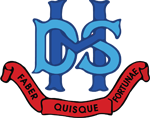
Dandenong High School is one of the largest co-educational government secondary schools in Melbourne, Victoria, Australia, catering for students from Years 7 to 12. It is the oldest school, public or private, in Melbourne's outer east, and now has 1400 students alone on its Dandenong site on the north side of the Princes Highway. The historic façade of the Administration Building will remain, as it is heritage-listed and is a landmark of Dandenong.

Education in Victoria, Australia is supervised by the Department of Education and Training (DET), which is part of the State Government and whose role is to "provide policy and planning advice for the delivery of education". It acts as advisor to two state ministers, that for Education and for Children and Early Childhood Development.

Norman Henry Lacy is an Australian former politician, who was a Victorian Government Minister from May 1979 to April 1982.

Mentone Girls’ Secondary College is a government secondary school for girls located in Melbourne's southeast beachside suburb of Mentone, Victoria. Over 1100 students are enrolled throughout Years 7 to 12, with students transitioning to the college in Year 7 from over 50 primary schools throughout Victoria.

Kooringal High School is a government-funded co-educational dual modality partially academically selective and comprehensive secondary day school, located in Kooringal, a suburb of Wagga Wagga in the Riverina region of New South Wales, Australia.

The John Monash Science School is a government-funded co-educational academically selective and specialist secondary day school, located on the Clayton campus of Monash University, in Melbourne, Victoria, Australia. The school specialises in science and technologies and is the state's first specialist science secondary school. A joint venture between the Government of Victoria and Monash University, the school opened in 2009 with one Year 10 class; and as of 2010 it was running at its full capacity of approximately 660 students. The school is named in honour of Sir John Monash.
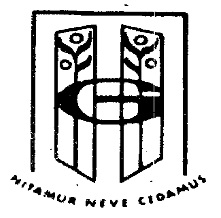
Galston High School is a government-funded co-educational comprehensive secondary day school, located in Galston, a suburb in the Hills District of Sydney, New South Wales, Australia.

Linstead Primary & Junior High is an elementary school in Linstead, Jamaica; one of oldest in the island. Despite several official name changes it has always been colloquially known as Linstead School.
Taguig Science High School (TSHS), also known as TagSci or TagSat, is a public science high school in Taguig, Philippines. It is one of three science high schools of the City of Taguig, and it is managed by the Schools Divisions Office of Taguig City and Pateros (SDO-TAPAT). TSHS traces its roots from the Special Science class of Signal Village National High School.

The Japanese School of Melbourne (JSM) is a Japanese international school located in Caulfield South, Victoria in the Melbourne area. The school uses a Japanese curriculum and the school is tailored to Japanese temporary residents; however is considered to be a state school by the Victorian Government.
